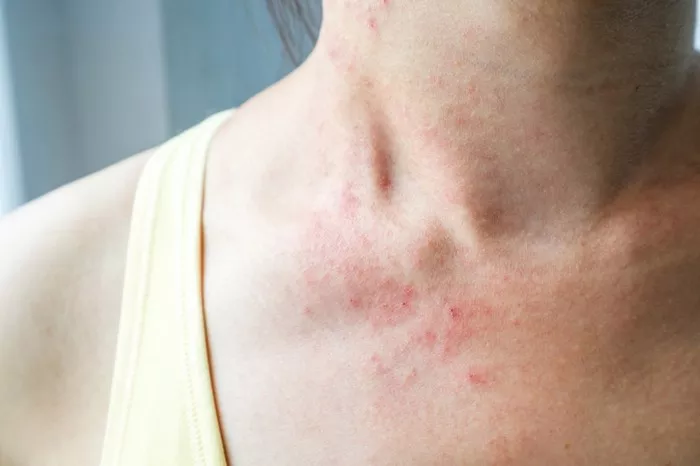Shingles, also known as herpes zoster, is a viral infection that causes a painful rash. The rash typically appears in a band or stripe, often on one side of the body. When shingles occurs on your back, it can be especially uncomfortable. This article will explain how you can get shingles on your back, the causes, risk factors, symptoms, and treatment options, as well as how to prevent the condition.
What is Shingles?
Shingles is caused by the varicella-zoster virus (VZV), the same virus that causes chickenpox. After a person has chickenpox, the virus remains dormant in the body’s nerve cells. It can reactivate later in life as shingles, especially when the immune system is weakened.
Shingles typically affects a specific area of the skin, following the path of nerves on one side of the body. The rash usually appears in a band-like pattern, often on the torso, face, or back. While shingles can occur anywhere on the body, it is quite common for people to develop shingles on their back.
How Do You Get Shingles on Your Back?
Shingles occurs when the varicella-zoster virus that has been lying dormant in the body reactivates. This usually happens after something triggers the virus to become active again. While shingles can appear on various parts of the body, it often shows up on the back for a few reasons.
Nerve Pathways in the Back The back contains a large number of sensory nerves that extend to different parts of the body, including the chest, abdomen, and limbs. Shingles usually follows the path of these nerves, known as dermatomes. When the virus reactivates, it travels along the nerve pathways, causing a rash in the area where the nerve reaches the skin. Because the back has multiple dermatomes that cover a wide area, it is common for shingles to appear there.
Weakened Immune System A weakened immune system is one of the most significant factors in the reactivation of the varicella-zoster virus. When the body’s immune defenses are not functioning at their best, the virus can be triggered to become active again. The virus can affect any part of the body, but if the immune system is compromised, the back can be a common location for the rash to develop. Factors like aging, stress, illness, or certain medications can make the immune system weaker, increasing the likelihood of shingles.
Age and Risk of Shingles Shingles is more common in older adults, especially those over the age of 50. As people age, their immune system naturally becomes weaker, making them more susceptible to the reactivation of the varicella-zoster virus. Older adults may experience shingles on their back or other areas of the body due to a decline in immunity.
Stress and Shingles Stress is another major trigger for the reactivation of the varicella-zoster virus. When the body is under stress, the immune system is less able to keep viruses in check. This means the varicella-zoster virus has a higher chance of reactivating, leading to shingles. Stress-induced shingles can appear anywhere on the body, including the back.
Exposure to Chickenpox If you have had chickenpox, you carry the varicella-zoster virus in your body for life. While it remains dormant in the nerve cells, it can reactivate at any time. If someone who has not had chickenpox or the chickenpox vaccine comes into contact with the shingles rash, they can develop chickenpox, not shingles. However, having a past chickenpox infection is what places you at risk for shingles later in life.
Symptoms of Shingles on Your Back
Shingles usually presents with a combination of symptoms. If you develop shingles on your back, you may experience the following:
Pain or Tingling One of the first signs of shingles is a sensation of pain or tingling in a specific area of the body. The pain may feel sharp, burning, or itching, and is often localized to one side of the back. This can occur days before the rash appears.
Rash The hallmark sign of shingles is a red rash that often appears in a stripe-like pattern. The rash usually starts as small red spots that later form blisters. These blisters can be fluid-filled and painful. The rash typically appears in the same area as the initial pain or tingling sensation, so if you experience discomfort in the back, the rash is likely to follow.
Blisters After a few days, the rash may develop into blisters that fill with fluid. These blisters can be quite painful and are often described as sensitive to touch. Over time, the blisters will break open and begin to crust over, eventually healing.
Fever and Headache Many people with shingles also experience fever, headaches, or fatigue. These symptoms often occur along with the rash and can make you feel generally unwell.
Itching As the rash progresses, itching may become more intense. The itchy sensation is common in areas where the blisters have started to heal, though it can occur at any stage of the shingles outbreak.
Postherpetic Neuralgia In some cases, shingles can lead to a condition called postherpetic neuralgia (PHN), which is persistent nerve pain that continues after the rash has healed. PHN can be especially troublesome if the shingles outbreak was on your back, as the nerve pathways in that area can be more sensitive.
Risk Factors for Shingles on Your Back
There are several factors that can increase your likelihood of getting shingles on your back or elsewhere on your body. Understanding these risk factors can help you be more aware of your chances of developing the condition.
Age As mentioned, shingles is more common in older adults. People over 50 are at an increased risk for developing shingles, particularly on the back or torso.
Weakened Immune System Conditions that weaken the immune system, such as HIV/AIDS, cancer, or certain autoimmune diseases, make it more likely that the varicella-zoster virus will reactivate. Additionally, medications that suppress the immune system, such as chemotherapy or corticosteroids, can also raise your risk of shingles.
Stress High levels of stress can contribute to the development of shingles. Stress weakens the immune system and can trigger the virus to reactivate, leading to a shingles outbreak.
Previous Chickenpox If you have had chickenpox at some point in your life, the varicella-zoster virus remains dormant in your body and can reactivate later, leading to shingles.
Gender Women are more likely to develop shingles than men. Though both genders can develop shingles, studies show that women have a slightly higher risk.
Treatment for Shingles on Your Back
If you develop shingles on your back, prompt treatment can help reduce the severity and duration of the symptoms. Treatment options include:
Antiviral Medications Antiviral drugs like acyclovir, valacyclovir, or famciclovir can help reduce the duration of the shingles outbreak. These medications work by preventing the virus from replicating, which can help the rash heal faster and reduce the risk of complications.
Pain Relief Pain relief is an essential part of shingles treatment. Over-the-counter pain medications like ibuprofen or acetaminophen can help manage mild pain. For more severe pain, a doctor may prescribe stronger painkillers or topical treatments.
Topical Creams Calamine lotion or other soothing creams can help alleviate itching and discomfort caused by the rash. Applying these creams to the affected area may help calm irritated skin.
Cool Compresses Applying a cool, wet compress to the affected area of your back can help reduce inflammation and soothe the skin. This can provide temporary relief from pain and itching.
Vaccination The shingles vaccine, known as Shingrix, is recommended for adults over the age of 50. The vaccine helps prevent shingles and reduces the risk of complications, including postherpetic neuralgia. If you are concerned about getting shingles, talk to your healthcare provider about vaccination.
Preventing Shingles on Your Back
While it’s not always possible to prevent shingles, there are steps you can take to reduce your risk:
Get Vaccinated The Shingrix vaccine is the most effective way to prevent shingles. It can reduce your risk of developing shingles and its complications, including postherpetic neuralgia.
Boost Your Immune System Keeping your immune system healthy is essential for preventing shingles. This includes eating a balanced diet, exercising regularly, getting enough sleep, and managing stress.
Avoid Stress Since stress is a major trigger for shingles, learning how to manage stress is crucial. Practice relaxation techniques such as deep breathing, meditation, or yoga to help lower your stress levels.
Take Care of Your Skin Keeping your skin healthy and avoiding injury or infection can help reduce the risk of developing shingles. If you have had chickenpox in the past, it’s important to be vigilant about protecting your skin.
Conclusion
Shingles on your back occurs when the varicella-zoster virus reactivates in the nerve pathways of your back. While anyone who has had chickenpox is at risk, factors like age, stress, and a weakened immune system can increase your chances of developing the condition. Prompt treatment and vaccination can help manage and prevent shingles. If you notice any symptoms of shingles on your back, it’s important to seek medical attention as soon as possible to reduce discomfort and complications.
Related topics:



























